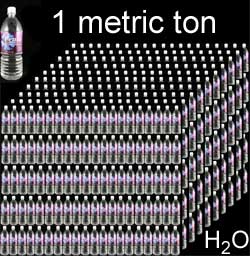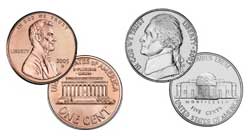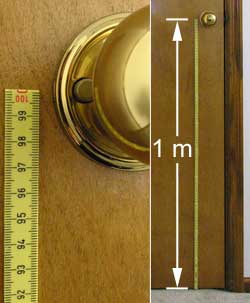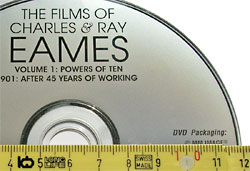In the International System of Units — SI — each physical quantity — length, mass, volume, etc. — is represented by a specific SI unit. Larger and smaller multiples of that unit are made by adding SI prefixes.
Contents
- Commonly used metric system units and symbols
- The most commonly used metric prefixes
- A note about usage
- Some examples and relationships among units
- Approximate conversion factors from inch-pound to metric units
Commonly used metric system units and symbols
| Quantity measured | Unit | Symbol | Relationship | ||
|---|---|---|---|---|---|
| Length, width, distance, thickness, girth, etc. |
millimeter | mm | 10 mm | = | 1 cm |
| centimeter | cm | 100 cm | = | 1 m | |
| meter | m | ||||
| kilometer | km | 1 km | = | 1000 m | |
| Mass (“weight”)* |
milligram | mg | 1000 mg | = | 1 g |
| gram | g | ||||
| kilogram | kg | 1 kg | = | 1000 g | |
| metric ton | t | 1 t | = | 1000 kg | |
| Time | second | s | |||
| Temperature | degree Celsius | °C | |||
| Area | square meter | m² | |||
| hectare | ha | 1 ha | = | 10 000 m² | |
| square kilometer | km² | 1 km² | = | 100 ha | |
| Volume | milliliter | mL | 1000 mL | = | 1 L |
| cubic centimeter | cm³ | 1 cm³ | = | 1 mL | |
| liter | L | 1000 L | = | 1 m³ | |
| cubic meter | m³ | ||||
| Speed, velocity | meter per second | m/s | |||
| kilometer per hour | km/h | 1 km/h | = | 0.278 m/s | |
| Density | kilogram per cubic meter | kg/m³ | |||
| Force | newton | N | |||
| Pressure, stress | kilopascal | kPa | |||
| Power | watt | W | |||
| kilowatt | kW | 1 kW | = | 1000 W | |
| Energy | kilojoule | kJ | |||
| megajoule | MJ | 1 MJ | = | 1000 kJ | |
| kilowatt hour | kW·h | 1 kW·h | = | 3.6 MJ | |
| Electric current | ampere | A | |||
* See Is it “weight” or “mass”? in the FAQ.
The most commonly used metric prefixes
This table shows the most commonly used SI prefixes. For a complete list of SI prefixes, including their origins, see SI prefixes and their etymologies.
| Prefix | Symbol | Factor | Numerically | Name |
|---|---|---|---|---|
| giga | G | 109 | 1 000 000 000 | billion |
| mega | M | 106 | 1 000 000 | million |
| kilo | k | 103 | 1 000 | thousand |
| milli | m | 10-3 | 0.001 | thousandth |
| micro | μ | 10-6 | 0.000 001 | millionth |
| nano | n | 10-9 | 0.000 000 001 | billionth |
A note about usage
Although unit names are ordinary words, note that unit symbols
- are case-sensitive, so uppercase and lowercase letters have different meanings — for example, mm is the millimeter (one-thousandth of a meter), but Mm is the megameter (one million meters);
- don’t have singular and plural forms — it’s 1 mL, 2 mL (no “s” at the end); and
- aren’t abbreviations, so there’s no period after a unit symbol (unless it happens to fall at the end of a sentence).
For more details on usage, including some common errors, read the USMA’s page on correct metric usage. In addition, the FAQ includes some information on usage.
Some examples and relationships among units

1 liter of water weighs 1 kilogram, so 1 cubic meter — 1000 liters — of water weighs 1000 kilograms or 1 metric ton.

A US cent weighs exactly 2.5 g, while the nickel weighs exactly 5 g.

A doorknob is typically about 1 m high.

The diameter of a CD or DVD is 12 cm.
1 mL = 1 cm3.
1 milliliter is the same volume as 1 cubic centimeter.
1 mL of water has a mass of approximately 1 g.
The mass of 1 milliliter of water is approximately 1 gram.
1 L of water has a mass of approximately 1 kg.
The mass of 1 liter of water is therefore approximately 1 kilogram.
1 m3 of water has a mass of approximately 1 t.
There are 1000 liters in a cubic meter, so the mass of 1 cubic meter of water is approximately 1000 kilograms or 1 metric ton.
The mass of a nickel is 5 g.
A US nickel weighs 5 grams, and a penny weighs 2.5 grams.
A typical doorknob is 1 m high.
Although there’s no precise standard for doorknob heights, they’re often about 1 meter above the floor.
The diameter of a CD or DVD is 12 cm.
A CD or DVD is 12 centimeters (120 millimeters) across. The diameter of the center hole is 15 millimeters.
1 ha is 1002 m2.
1 hectare is 10 000 square meters, equivalent to the area of a square 100 meters on a side. A football field is about 100 meters long, so imagine a square the length of a football field on each side, and that’s 1 hectare.
Approximate conversion factors from inch-pound to metric units
This table gives easily remembered, approximate conversion factors for some common units, as well as more precise factors. Boldfaced values are exact. But remember, estimated values don’t warrant precise conversions. If “it was about 100 yards away,” then it was about 100 meters away. Only if it was exactly 100 yards away would one convert the measurement to 91.44 meters.
| To convert from | to | multiply by | More precisely, multiply by |
Note |
|---|---|---|---|---|
| acres (US survey) | hectares (ha) | 0.4 | 0.404 687 3 | |
| feet (ft) | meters (m) | 0.3 | 0.3048 | |
| fluid ounces (fl oz) | milliliters (mL) | 30 | 29.573 53 | 2 |
| gallons (gal) | liters (L) | 3.8 | 3.785 411 784 | 2 |
| inches (in) | centimeters (cm) | 2.54 | 2.54 | |
| knots (kn) | kilometers per hour (km/h) | 1.852 | ||
| miles (mi) | kilometers (km) | 1.6 | 1.609 344 | |
| miles per gallon (mpg) | liters per 100 km (L/(100 km)) | divide 235.215 by mpg |
||
| miles per hour (mph) | kilometers per hour (km/h) | 1.6 | 1.609 344 | |
| nautical miles (nmi) | kilometers (km) | 1.852 | ||
| ounces (oz) | grams (g) | 28 | 28.349 52 | 1 |
| pound-force (lbf) | newtons (N) | 4.448 222 | ||
| pounds (lb) | kilograms (kg) | 0.45 or divide by 2.2 |
0.453 592 37 | 1 |
| pounds per square inch (lbf/in2) | kilopascals (kPa) | 6.894 757 | ||
| quarts (qt) | liters (L) | 0.9 | 0.946 352 946 | 2 |
| square feet (sq ft) | square meters (m2) | 0.1 | 0.092 903 04 | |
| square miles (sq mi) | square kilometers (km2) | 2.6 | 2.589 988 | |
| yards (yd) | meters (m) | 0.9 | 0.9144 |
Note 1. Ounces and pounds refer to avoirdupois units.
Note 2. Fluid ounces, quarts, and gallons refer to US liquid measures.
Back to USMA home.
Copyright © 1998–2014, US Metric Association (USMA), Inc. All rights reserved.
Updated: 2014-08-05